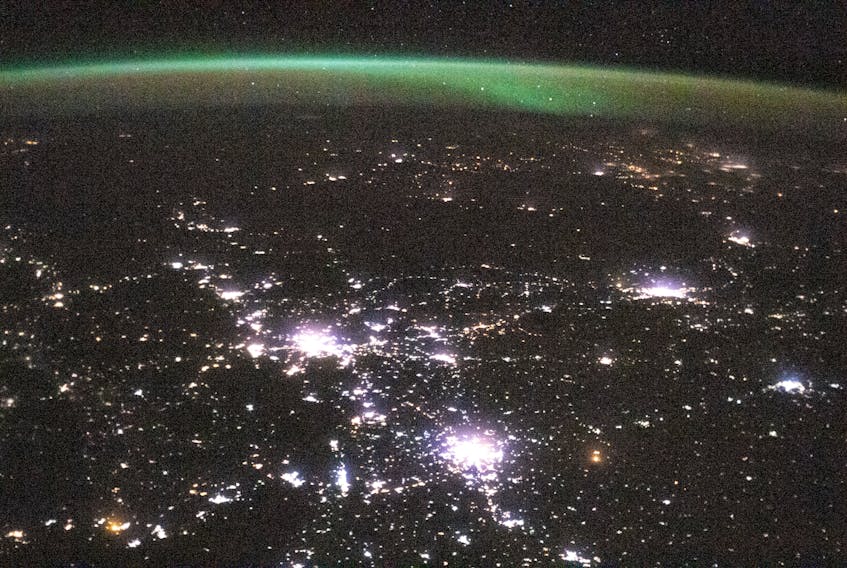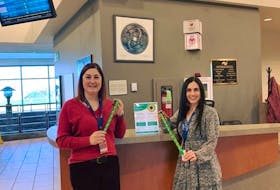Light pollution is, unfortunately, a ubiquitous by-product of global urban/suburban growth.
Defined broadly as an overabundance of or over-illumination by artificial light in the night environment, light pollution presents many problems beyond the obvious negative impact it has for astronomers trying to view the night sky.
Anyone who lives in an urban or suburban setting knows the effects that surrounding bright light sources have on the ability to see anything more than the moon and (perhaps) the brightest stars in the night sky. The huge array of bright lights that bedeck almost every street, highway, intersection, home or yard, and commercial or industrial building throughout the surrounding area often preclude any chance to view the night sky.
Hundreds, if not thousands, of bright lights - many serving only to advertise a business or product - burn from dusk until dawn, creating a massive dome of light that can be seen from kilometers outside the urban/suburban area. They either wash out the view of the night sky entirely or significantly diminish what can be seen. While I appreciate many of the lights are necessary to ensure safety and security at night, there is much that could be done to reduce the negative impact. Though primarily a problem associated with densely populated centers in North America, Europe, and Asia, as the world's larger urban/suburban areas expand to become sprawling megacities with millions of people, the resulting elevated demand for and use of domestic and commercial lighting will only exacerbate the problem in the future.
Human health impact
In addition to spoiling the view of the night sky for astronomers, light pollution poses potential threats to both human health and the disruption of natural ecosystems.
The excessive use of too much light or the wrong type of light can often lead to elevated levels and intensity of headaches in some people, cause sleep deprivation (as people's natural circadian rhythm is disrupted), and increase fatigue, anxiety, moodiness, and medically-defined stress.
Glare, particularly when reflected from wet surfaces on roadways and sidewalks, resulting from too many competing light sources along the roadways and at intersections, can contribute to increased rates of accidents (both auto and pedestrian), particularly for the elderly, whose night vision is typically less than that of younger people.
Excessive light use can also impact overall energy costs, not only for individual homeowners/renters but also for businesses and industries. Large volumes of lights, particularly inefficient lights, left on all night while serving no purpose, needlessly consume huge amounts of electricity, resulting in higher consumer bills, and increased demand for energy production.
Most people are not aware over-illumination at night can harm nocturnal wildlife and natural processes, affecting animal physiology, navigation, reproduction cycles, competitive interactions, and predator-prey relationships, as well as plant reproduction. By disrupting the natural diurnal pattern of light and dark, light pollution can significantly impact how animals and plantlife flourish or decline in a given area.
How to deal
There are numerous ways to deal with light pollution. The total number of lights could be reduced, or, in many instances, eliminated. Increased use of motion-sensor activated lights could negate the need for lights to remain on all night or for extended periods. Likewise, the orientation of light fixtures relative to the ground, building, or sky could be altered to direct light downward rather than spilling a large portion skyward. Perhaps most importantly, the selection and use of certain types of lights would significantly reduce light pollution - LED lights, with a cooler, whiter, more easily directed light are being used more to replace the older sodium lamps typically used outdoors.
I strongly believe that if more people could see the night sky, there would be a greater interest in astronomy. This belief is strengthened by the number of people I have seen at night on the beach in the PEI National Park in the summertime. I have given many impromptu night sky tours to some of these late-night beach-goers, who, away from the light pollution of the city centers, were blown away at the clear night skies and the amazing things that could be seen just with their naked eyes. One night last summer, I ended up with about 50 people gathered around me in the dark, after I had initially offered to give a night sky tour to a family of four who I overheard wondering what bright objects were in the sky.
There is much beauty in the night sky, and much to be seen. If nothing else, standing outside and looking up at the night sky feeds our sense of wonder, imagination, and the miracle of creation, something which I think we could all use a little more of these days.
This week's sky
This upcoming week is not very good for spotting planets. Venus and Saturn are both too close to the sun to be observed. Jupiter is likewise lost from view as it approaches superior conjunction with the sun on Jan. 28.
Mercury (magnitude -0.5, in Capricornus - the Sea Goat) makes a brief appearance around 5:25 p.m., 10 degrees above the southwest horizon as dusk fades, before setting around 6:45 p.m.
Mars (magnitude +0.5, in Aries - the Ram) becomes visible about 58 degrees above the southern horizon by 5:45 p.m., remaining observable until around 12:25 a.m. when it drops below 10 degrees above the western horizon.
The year's first full moon - the wolf moon - occurs on Jan. 28. It was given this name by the indigenous tribes of northern North America because, on such moon-lit, winter nights, the wolves could be heard howling as they hunted through the forests.
Until this week, clear skies.
Events:
- Jan.28 - Full (wolf) moon
Visit http://www.cleardarksky.com/maps/lp/large_light_pollution_map.html to see images of urban/suburban nighttime light levels around our planet.
Glenn K. Roberts lives in Stratford, P.E.I., and has been an avid amateur astronomer since he was a small child. He welcomes comments from readers at [email protected].








